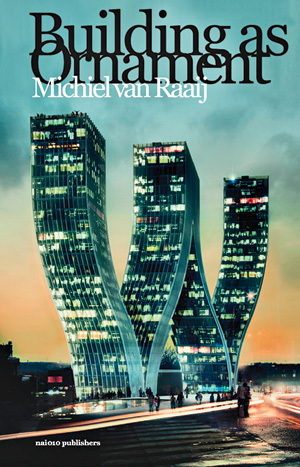For more than a century, ornament in architecture was anathema in the Calvinist Netherlands—and elsewhere too. In his book Building as Ornament: Iconography in Contemporary Architecture, Michiel van Raaij, who is the editor in chief of the online architecture platform Architectenweb, interviews 10 well-known architects and architectural historians to reveal how this attitude has changed since the 1990s.

The moralism of modernism, though, has not yet completely disappeared: “A successful ornament,” writes van Raaij, “represents a virtue and explains the function, status, structure and context of the building.” An entire building on the scale of an ornament is one thing, but ornament for its own sake, in other words, is still not accepted by many practitioners.
According to van Raaij, buildings have not become more ornamented; instead, architecture has become more ornamental, i.e., more expressive. Here a terminology issue manifests itself: van Raaij is not talking doodads, as the word “ornament” might suggest, but rather sculptures, or even—forgive my French—icons. Ducks rather than decorated sheds, as Robert Venturi and Denise Scott Brown would say.
The 120 examples shown in the book (some built, most not) include well-publicized eye candy like BIG's swoopy W-shaped structure for the Walter Towers in Prague (shown on the book's cover); Frank Gehry's Guggenheim Museum in Bilbao; MVRDV's double tower in Seoul (at which some took umbrage because they saw in it a reincarnation of the planes flying into the Twin Towers); and Norman Foster's “erotic gherkin” for Swiss Re in London. One of the forerunners of this trend was Herzog & de Meuron, which used new materials not to articulate building components, “but to enable the building itself to 'speak' as a three-dimensional object.” In a series of buildings in the 1990s for the Swiss herb-drop manufacturer Ricola, for instance, the firm experimented with images printed on glass.
Oddly, though, not all of van Raaij's examples fit his own enlarged definition of ornament. UNStudio's Mercedes-Benz Museum in Stuttgart, for example, is an abstract sculpture, an ode to sleekness and speed, not a duck. Not at all.
Van Raaij is convinced that building-as-ornament is the new normal. “Its communicative power is finding its way, slowly but surely, to the broader production of buildings.” Some of the most adventurous and expressive new architecture these days is being commissioned by businesses and city agencies using it as a form of functional advertising, as a billboard in the best sense. Van Raaij's book signals a shift in the use of ornament, from an add-on to an integral part and purpose of the design.
Tracy Metz, an Amsterdam-based international correspondent for Architectural Record, is the author of Sweet & Salt: Water and the Dutch.

Post a comment to this article
Report Abusive Comment